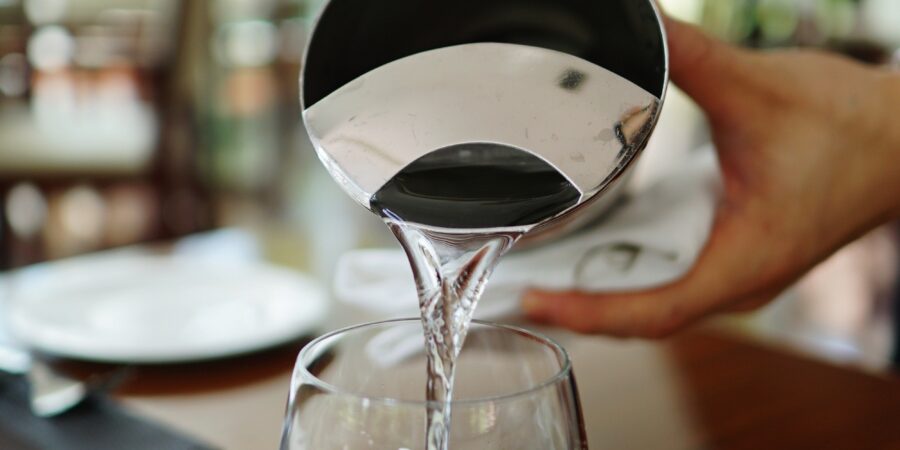Myths and truths about nature’s own drink
This week I had a patient ask me how much water we needed to drink a day for good health and skin. I told her that I would be writing this blog especially for her, so here it is:
Firstly, almost everyone has heard that we need 8 glasses of water a day. Is it true? As a skin cancer doctor and someone who runs a research lab that studies genomics, skin cancers and skincare products, I know there’s a special link between melanin—the cause of all human and animal colour—and water.
All cellular systems, whether human or within primitive creatures, are powered by ATP (which stands for ‘adenosine triphosphate’, a complex molecule made up of the nucleoside adenosine, and a tail consisting of three phosphates). Energy is produced from the ATP molecule by a reaction that removes one of the phosphate-oxygen groups, leaving behind adenosine diphosphate (ADP), which as the name indicates, contains two phosphates. This ADP then gets recycled in the mitochondria of the cell—the latter function as the rechargeable batteries that power all living cells. Just as monetary currencies keep our societies functioning, this hooking and unhooking of that last phosphate [on ATP] is what keeps all humans and creatures operating.
But what supplies energy to our cellular batteries’ aka mitochondria? How do they get recharged? From hydrogen, the energy carrier most widely used by nature. But where do mitochondria get their hydrogen? From the dissociation or breaking down of water. Melanin basically breaks down water into hydrogen and oxygen.
Myth No 1: You drink water to dissolve toxins.
If melanin breaks down water to generate hydrogen, the water we drink every day is not to dissolve our toxins (which is why beyond a certain level drinking copious amounts of water makes no difference) but to maintain a reservoir of hydrogen for our energy needs. In fact, if our body couldn’t acquire energy from water, it is estimated that we would need to eat between 50 to 170 kg of food (110–374 lb) daily.
Myth No 2: Water helps your kidneys (a patient even used this as an excuse for his beer drinking!)
We all have about 5 litres of blood, and our kidneys filter that amount 36 times a day i.e., 180 litres. Drinking water for the sake of it is not particularly dangerous. If you drink more than you need, you will simply get rid of it in your urine. The kidneys have a simple mission as an organ: water losses equal=water intake. Which is why heart or kidney failure causes swelling of the body especially around the feet and ankles. This is because the kidney is not able to excrete the accumulated water. However, if you are prone to kidney stones, dehydration worsens things, so you must drink more water.
Truth No 1: There are some health reasons for drinking water.
If you have an infection or a fever (due to raised metabolic rates to fight infections), or if you have vomiting or diarrhoea (due to the resulting water loss), you will need to drink more water to rehydrate you. During pregnancy and lactation you need to drink more water as you are drinking for the baby as well.
Truth No. 2: Thirst is an indicator of dehydration
Thirst is an indicator and during a day spent lazing around, one can let thirst guide our water intake. Thirst is essentially our body warning us to drink more fluids. Typically, when planning exercise we must drink before we are thirsty, or before planning any physical activity. Going running? Drink several glasses of water before you start. The American College of Sports Medicine recommends adding 12 ounces of water to your daily intake for every 30 minutes of a workout.
Water intake calculators:
The below are from the University of Missouri, courtesy of Jennifer Stone, Physical Therapist Clinic Supervisor:


Finally, The Institute of Medicine of the National Academies recommends drinking 2.7 litres (or 91 ounces or 11 cups) for adult women a day, and 3.7 litres (or 125 ounces or 15 cups) for men. It is important to note that we get water from food we eat also. About 80 percent of our water intake is from drinking water or other beverages and the other 20 percent is from eating foods. Of course, certain fruits and vegetables like watermelons and cucumbers have more water content.
In some geographical locations, one needs more water. I was recently in Tucson, Arizona to deliver a keynote at the “Innovations in Cancer” Tucson Symposium and found the weather very hot and dry. It was the dryness more than the heat here that carried a risk of dehydration. Sweat evaporates quickly in dry heat, allowing the body to feel deceptively cooler, meaning I was not sweating much at all, despite the high temperatures around 38 degrees C. Water loss was happening at the same rate as happens in humid temperatures where I would sweat more, but sweat dried on skin so quickly that I did not notice it. There were signs everywhere warning of the risks of not carrying enough water. The surrounds in Tucson were also mountainous. At higher altitudes, your body is working harder to obtain oxygen, so the respiratory rate goes up. It is estimated that one needs an additional 1 to 1.5 litres of water per day when in higher altitudes.


I have offered some general guidelines here. However, you don’t have to worry about getting your 8 glasses of water a day because it is more than likely that you have been unconsciously doing this every day of your life without realising it via your coffees, teas, smoothies, and milkshakes (and food)!
THE END
Written By
Dr Sharad Paul
Dr Sharad Paul is an award winning, world renowned recognised skin-cancer expert and thought-leader.






